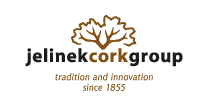It's that time of year again. That time of year, you have to go out and scratch heads about giving your friends and family gifts. It's not only a consumer world we're living in but a conscious one as well. We are surrounded by things that are not environmentally friendly. Being a part of the throwaway culture frankly causes us to look the other way.
Well, folks, I am here to spread the cheerful joy of the incredible cork tree and its delightful bark. If nothing else, to shed some light on the negative carbon footprint from the world of consumerism.
Cork is the bark of the cork oak tree. Once harvested from the tree, it allows new bark to grow in its place without killing or damaging the trees (think sheering a sheep).
I'm sure you've heard of the main ways that cork can be used:
Cork Boards
Flooring
Wine Corks
Liquor Stoppers
Cork can also be used on walls, for insulation, coatings for the outside of the walls, lampshades, and anything you can make out of leather. The truth of the matter is that cork is so versatile, and the list of products that can be created is almost endless; new products are being developed all of the time.
Cork is also naturally antimicrobial and hypoallergenic, making it a good fit for many products, including bags and sporting equipment. In addition to the above, there are ways that cork can be processed to preserve its resistance to fire, water, and even insects. As we as a world look to the future, renewable materials such as cork will play a vital role. It is essential to continue to find new uses for these materials.
Being that cork regrows after harvesting; every tree is a renewable source of raw material. During the regeneration process, the cork tree increases the amount of carbon dioxide is absorbs in a year. On average, a cork tree that has been recently harvested will absorb five times more carbon dioxide from the are than a cork tree that has not been harvested. It has been estimated that every year cork oak forests retain up to 14 million tons of CO2, a sizable contribution to reducing greenhouse gas emissions.
Cork farmers are conscious of their crop's role in the global ecosystem, they plant two saplings when a cork tree reaches the end of its natural life. These two saplings are in addition to the acorns dropped by the tree that mature into productive trees. The process ensures that the cork forests will continue to flourish and expand for generations to come.
Corks' lists of contributions to the environment go on and on.
The point is, is that cork should be celebrated. Cork should be used, and cork should be understood. When you pop open that bottle of champagne or bottle of wine or liquor this year, raise a glass to our friend, the cork tree. Cheers!
Want to learn more about the history of cork and it's sustainability? Check out our post on Cork, The Myth.
